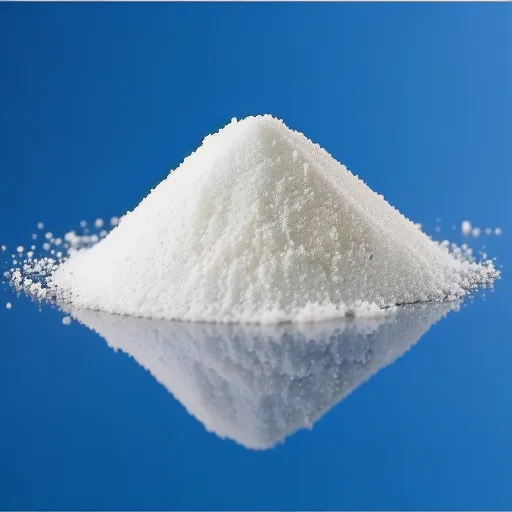Open your fridge, and chances are, something inside contains sodium triphosphate. Maybe it’s in the frozen shrimp. Perhaps it’s hiding in your favorite deli turkey. But what is it? Why is it there? And should you be concerned?
Let’s break it down in plain English—no fluff, no fear-mongering—just the facts you deserve.
Sodium Triphosphate: Not as Scary as It Sounds
That long name? It belongs to a white, odorless powder with a pretty big job. Sodium triphosphate (STPP) is a food additive that keeps your food juicy, tasty, and shelf-stable. It’s made from sodium salts and phosphate groups, forming a compound that dissolves in water and works like a charm in processed food.
Think of it as a kind of food helper—it doesn’t add flavor or nutrients, but it does make food better in ways you can feel and see.
Why Food Companies Use It (And Why You Should Care)
Let’s be honest. Nobody wants dry, rubbery chicken or dull, grey shrimp. That’s where STPP steps in.
Here’s what it does:
- Locks in moisture. Your pre-marinated chicken? It stays juicy thanks to STPP’s water-binding powers.
- Boosts texture. Meats become firmer and more uniform.
- Prevents spoilage. It slows bacterial growth and extends shelf life.
- It keeps things blended. Fats, oils, and water don’t separate in cheese or sauces.
And yes—it helps food look good too. Have you ever noticed how perfectly pink that ham slice is? That’s not just luck.
Where You’ll Find Sodium Triphosphate
You don’t need to be a label-reading detective to find STPP. It shows up in lots of places, like:
- Processed meats – hot dogs, sausages, deli slices
- Seafood – shrimp, scallops, imitation crab
- Poultry – marinated chicken breast or turkey
- Cheeses – mainly processed types
- Instant foods – noodles, boxed mac and cheese
- Frozen meals – anything with meat or sauces
Sometimes, it’s listed as E451; other times, it’s sodium tripolyphosphate, but it’s all the same.
Real-World Example: Shrimp with STPP
Here’s a tasty example. When shrimp are frozen, they lose water. Nobody wants tiny, dried-out shrimp after cooking. So, processors soak them in a solution with STPP. That way, the shrimp hold on to water and plump up. You get better texture and flavor and less shrinkage in the pan.
Is it cheating? Not really. It’s innovative food science.
What About in Plant-Based Foods?
Great question. STPP isn’t just for meat and seafood. It’s becoming popular in vegan and plant-based meats, too. Why?
Because it:
- Mimics the mouthfeel of real meat
- Holds plant proteins together
- Extends shelf life
- It keeps soy or pea protein from drying out
As meat alternatives keep trending, expect to see STPP used more often behind the scenes.
Is Sodium Triphosphate Safe?
Let’s get one thing straight: it’s safe when used correctly.
Health authorities worldwide agree, including the FDA, EFSA, and Health Canada. STPP is Generally Recognized As Safe (GRAS) in the U.S. and has strict usage limits elsewhere.
But Should You Worry About Long-Term Effects?
Well, maybe a little—but only if you eat tons of ultra-processed foods daily.
- Too much phosphorus can mess with calcium absorption and strain the kidneys.
- People with kidney disease should watch their phosphate intake.
- Cumulative effects from multiple food sources could push you over daily limits.
But for most folks? STPP in moderation isn’t a problem. It’s about balance, not elimination.
Myth-Busting Time
“It’s a toxic chemical!”
Nope. It’s been tested, studied, and approved by experts worldwide.
“It’s used to trick buyers with fake weight!”
Only if abused. Legit use retains natural moisture. Fraud happens when companies overuse it to inflate seafood weight—which is illegal.
“It causes cancer!”
Absolutely no credible studies support that.
Don’t let the scary name fool you. Sodium triphosphate has a job and does it well when used responsibly.
Regulations and Food Labeling
Here’s how different regions treat STPP:
RegionStatusLimit
USA GRAS (FDA) Up to 5% in some products
EU Approved (E451) Strict limits by food category
Canada Permitted Similar to EU
Australia/NZ Allowed Follows Food Standards Code
China Approved (GB Code) Regulated based on application
Look for it as:
- Sodium tripolyphosphate
- Sodium triphosphate
- E451
- Polyphosphates
Are There Better Alternatives?
For some companies, especially those chasing a clean label, yes.
Natural or low-phosphate alternatives include:
- Carrageenan – a seaweed-based thickener
- Sodium citrate – milder, often used in cheese
- Tapioca starch – for water retention and texture
- Guar gum – for emulsification in sauces and plant-based foods
However, none of them do everything STPP does. They often need to be blended or modified for similar results and usually cost more.
The Environmental Angle
STPP isn’t just a food issue. Its production and disposal raise some concerns:
- Phosphate-rich wastewater can lead to algae blooms and water pollution.
- Manufacturing uses energy and acid-base chemicals.
- Overuse in agriculture and food can lead to excess phosphorus in ecosystems.
Fortunately, more manufacturers are investing in greener processes, like:
- Recycling wastewater
- Reducing phosphate runoff
- Using ISO 14001-certified plants
So… Should You Avoid It?
Not necessarily. But you should be aware of it.
If you eat many frozen meals, processed meat, or seafood, you probably get more phosphate additives than you think. Reading labels and switching up your diet can help balance this out.
Fresh food isn’t just trendier—it often means fewer additives.
Final Thoughts: STPP Isn’t the Enemy, But It’s Not a Superhero, Either
Sodium triphosphate in food has its place. It helps keep your food moist, stable, and appealing. And when used correctly, it’s safe.
But like anything else in processed food, more isn’t better. Be smart. Mix fresh meals, read labels, and know what you’re putting on your plate.
FAQs About Sodium Triphosphate
Q: Is it dangerous?
A: Not at regulated levels. Only excessive intake may raise concerns.
Q: Does it make food unhealthy?
A: Not directly, but it’s often found in ultra-processed foods, which you should limit.
Q: Is it vegan?
A: Yes. STPP is synthetically made and doesn’t come from animal products.
Q: What does it taste like?
A: Nothing. It’s tasteless and only works behind the scenes.
Q: Can I avoid it?
A: Sure. Choose fresher, whole foods over processed ones.

